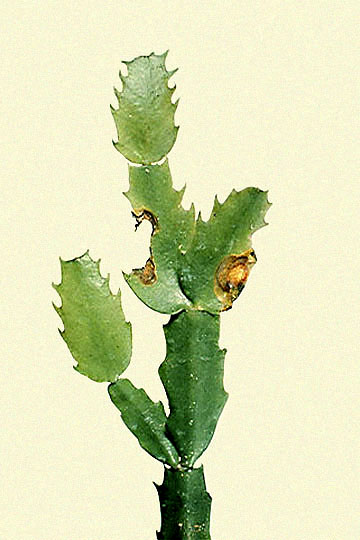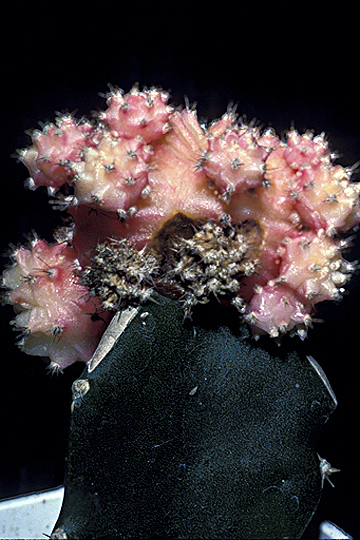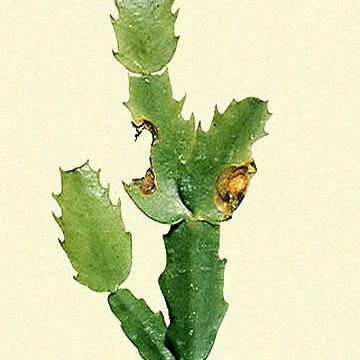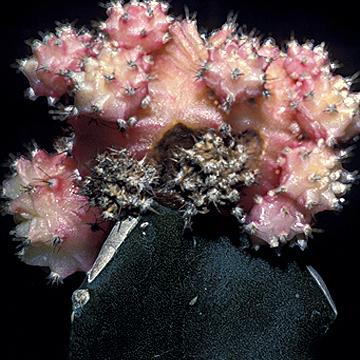DISEASE: Bacterial rot
HOST: Fennel
Soft rot of fennel.

Bacterial rot | Fennel
DISEASE: Bacterial rot
HOST: Fennel (Foeniculum vulgare)
PATHOGEN: Dickeya sp.
PATHOGEN SYNONYM: Erwinia chrysanthemi
SOURCE: R. Davis
DISEASE: Bacterial soft rot (Cladode rot)
HOST: Cactus
Brown necrotic areas of cladodes of Christmas cactus.

Bacterial soft rot (Cladode rot) | Cactus
DISEASE: Bacterial soft rot (Cladode rot)
HOST: Cactus (Schlumbergera × buckleyi)
PATHOGEN: Pectobacterium carotovorum
PATHOGEN SYNONYM: Erwinia carotovora subsp. carotovora
SOURCE: A. Alvarez
DISEASE: Bacterial soft rot
HOST: Cactus
Soft rot of grafted cactus.

Bacterial soft rot | Cactus
DISEASE: Bacterial soft rot
HOST: Cactus ()
PATHOGEN: Pectobacterium carotovorum
PATHOGEN SYNONYM: Erwinia carotovora subsp. carotovora
SOURCE: R. Raabe
DISEASE: Bacterial soft rot
HOST: Cactus
Black, soft, decayed areas of Indian fig cladodes.

Bacterial soft rot | Cactus
DISEASE: Bacterial soft rot
HOST: Cactus (Opuntia ficus-indica)
PATHOGEN: Pectobacterium carotovorum
PATHOGEN SYNONYM: Erwinia carotovora subsp. carotovora
SOURCE: L. Fucikovsky
DISEASE: Olive knot
HOST: Olive
Multiple infections of young stems. The bacterium invades vascular tissues during certain times of the year and may be isolated from branches that appear healthy.

Olive knot | Olive
DISEASE: Olive knot
HOST: Olive (Olea europaea)
PATHOGEN: Pseudomonas savastanoi pv. savastanoi
SOURCE: M. Schroth
DISEASE: Olive knot
HOST: Olive
Tree with knots/galls on branches along with twig dieback, which is associated with knots. Fusarium and Diplodia spp. infect through knots and are thought to be main reason for dieback.

Olive knot | Olive
DISEASE: Olive knot
HOST: Olive (Olea europaea)
PATHOGEN: Pseudomonas savastanoi pv. savastanoi
SOURCE: M. Schroth
DISEASE: Olive knot
HOST: Olive
Multiple infections on olive branch. Knots at this stage begin to die from the outside in and are infected by several fungi.

Olive knot | Olive
DISEASE: Olive knot
HOST: Olive (Olea europaea)
PATHOGEN: Pseudomonas savastanoi pv. savastanoi
SOURCE: M. Schroth










